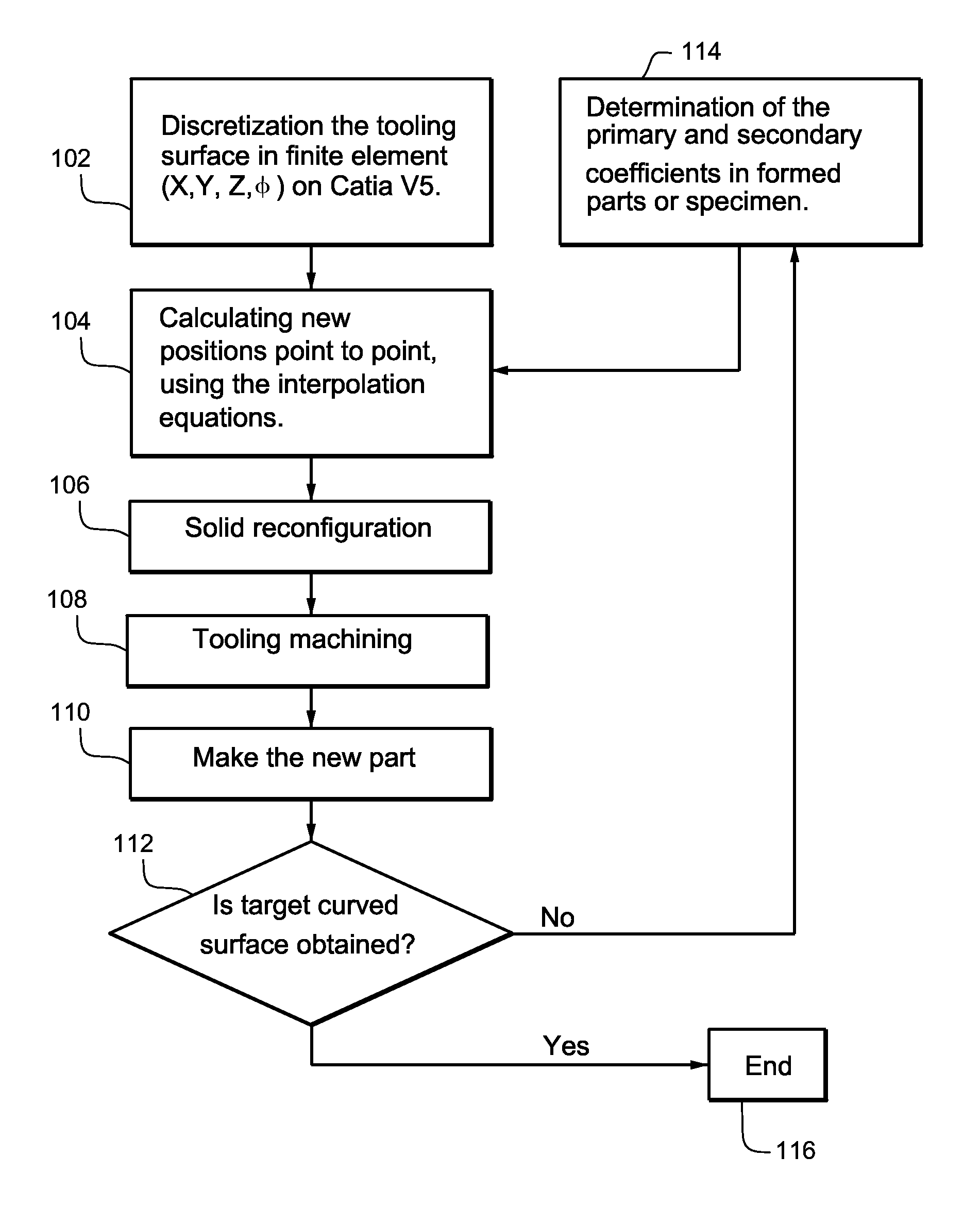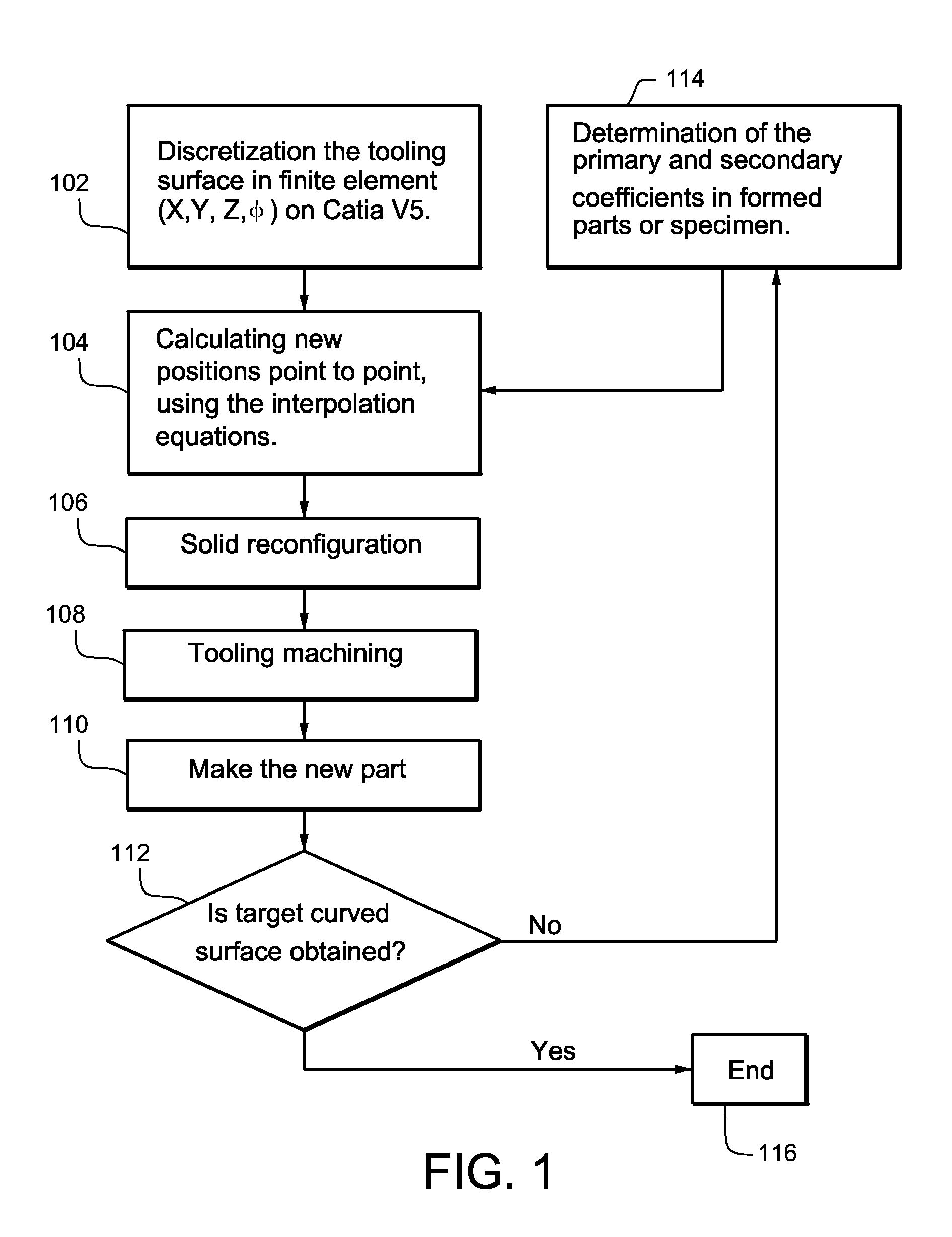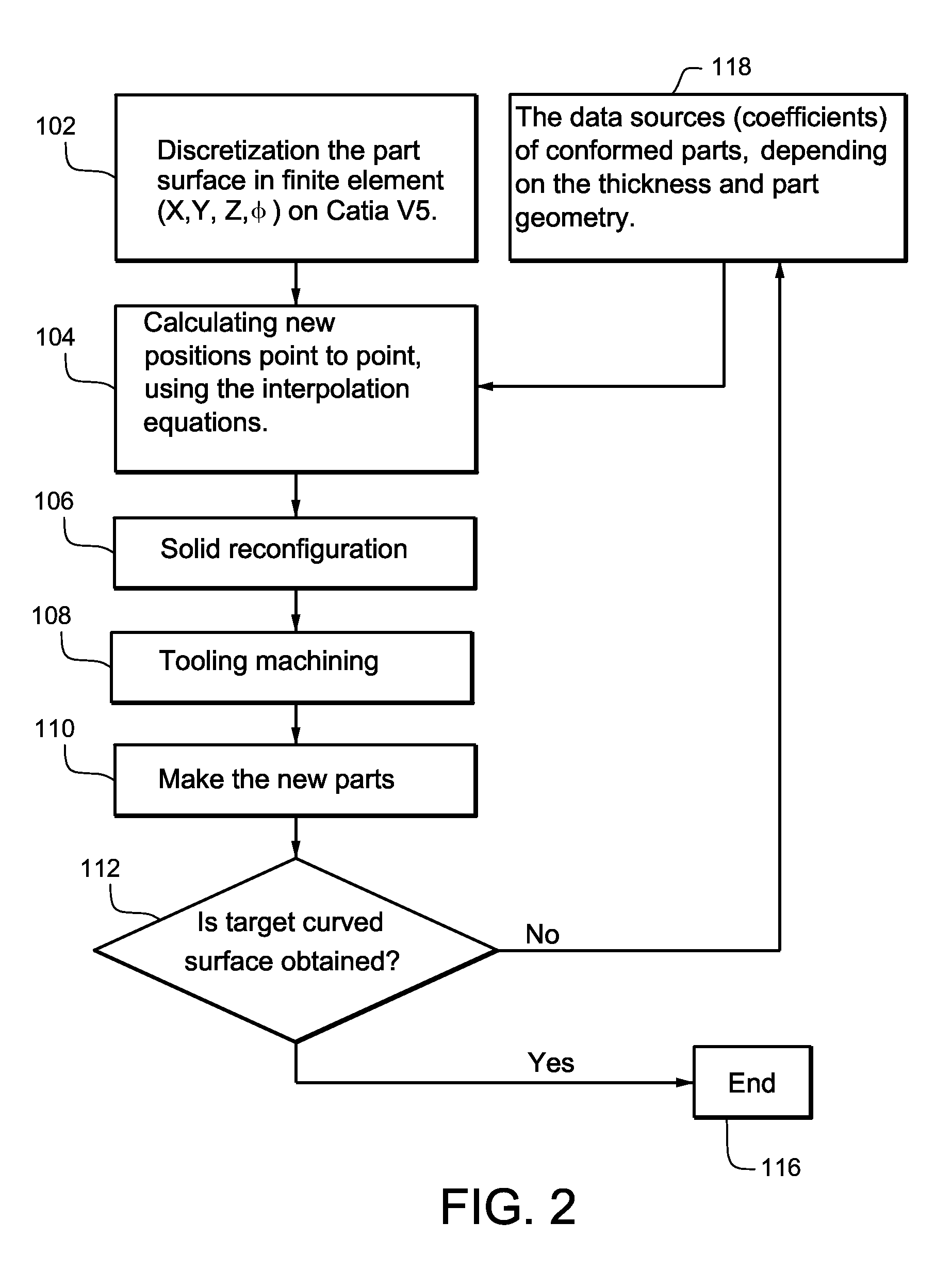Springback compensation in formed sheet metal parts
a technology of sheet metal parts and springbacks, applied in the direction of computer control, program control, instruments, etc., can solve the problems of springback in parts such as leading edges and parts with double negative curvature, increase weight and cost, and affect visual appearance, so as to achieve the effect of not affecting visual aspects
- Summary
- Abstract
- Description
- Claims
- Application Information
AI Technical Summary
Benefits of technology
Problems solved by technology
Method used
Image
Examples
example compensation
of Narrow Surfaces: Leading Edge and Slat
[0065]The surface is divided into lines which depend on the distances derived (dz / dy) and the distance “X” (variable) depends on the derivatives (dz / dx). The angle is defined in the direction “x” measured from the surface.
[0066]Z′ is determined by the equation below:
[0067]The calculation is done column by column, as shown in FIGS. 7 & 8.[0068]i=1 to m, after j =1 to n, according generic spreadsheet, FIG. 9.
Z′ij=Zij(k0×(senφij)s) (3)[0069]where:[0070]K0=maximum value to be compensated in mm.[0071]s=smoothing curve.[0072]Example range of values used in the constant (reference):[0073]k01 =to 20 mm.[0074]s=10 to 50
[0075]Once the “cloud” of points Z′ are derived, the example non-limiting system of FIG. 12 generates the “compensated solid” and machine tooling parameters to manufacture a test part. The process may be iterative until the desired line system is attained.
Example Non-Limiting Flowchart Description
[0076]FIG. 1—Tooling and parts are ava...
PUM
 Login to View More
Login to View More Abstract
Description
Claims
Application Information
 Login to View More
Login to View More - R&D
- Intellectual Property
- Life Sciences
- Materials
- Tech Scout
- Unparalleled Data Quality
- Higher Quality Content
- 60% Fewer Hallucinations
Browse by: Latest US Patents, China's latest patents, Technical Efficacy Thesaurus, Application Domain, Technology Topic, Popular Technical Reports.
© 2025 PatSnap. All rights reserved.Legal|Privacy policy|Modern Slavery Act Transparency Statement|Sitemap|About US| Contact US: help@patsnap.com



